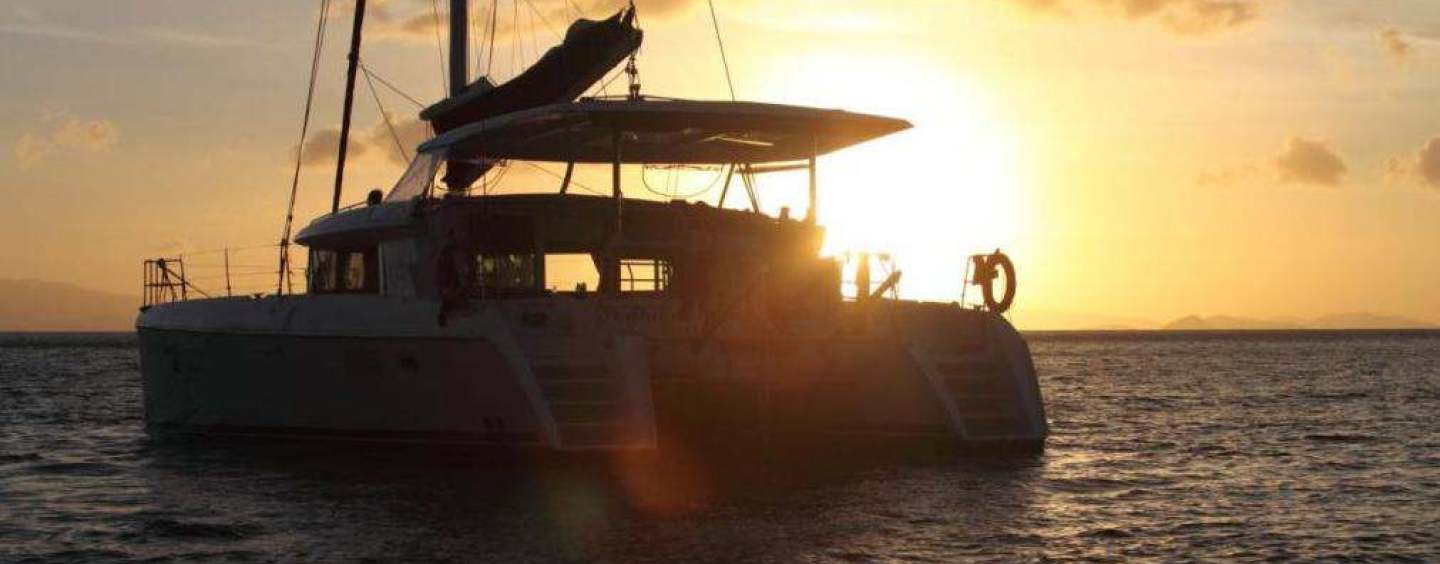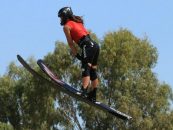It was not long after our briefing when the marina ropes untied and we found ourselves bobbing in the famous indigo water, all alone.
My family is notorious for giving things a red hot crack, even if sometimes we probably shouldn’t. We had decided to sail the Whitsundays – and put our lives into the hands of our skipper: my dad, an “experienced” sailor with a resume boasting a completed sailing course from 20 years ago. Visiting just two months after the devastating Cyclone Debbie hit, we were interested to see the impacts, and hoped that the magic of the Whitsundays was still intact. Soon enough, we realised that this wouldn’t be the typical pinacolada-by-the-pool holiday, but more of a memorable week of learning and adventures with my family.
LEARNING ABOUT THE OCEAN
Following our briefing, we realised we were in for a more tumultuous ride than we had expected. The advertised calm and crystal waters had painted an unrealistic picture in our minds. The conditions were rougher – much rougher than we had anticipated. We were warned of the dangerous waters, and advised on which spots on the map would get us into trouble and sweep us kilometres away from land. We were made fully aware that if we sailed into particular spots, it would become very difficult to get back.
With that at the back of our minds (and the forefront of my dad’s), we began our venture to our first overnight stop, Nara Inlet, playing it safe using the motor for now. My sisters were out the front re-enacting the titanic scene when we started to run into the choppy conditions. Two dolphins, (an almost) man overboard, and five soaked-selves later, we had arrived at where we would anchor for the night. I remember learning in the briefing about how powerful the sea could be, and how little control we had over it. It was up to the weather to dictate and help us to decide what to do, when to leave and stay. It was a huge reminder of how insignificant we were in comparison to the forces of nature.
LEARNING TO LIVE WITHOUT TECHNOLOGY
The first night saw us run into a major issue. (Well, major if you are a tech savvy twenty-something like me) The lack of pings and dings, and screens lighting up began to bother me, and I quickly realised that we wouldn’t have mobile signal or internet for the next week. What on earth were we going to do with ourselves? Instagram was clearly going to have to wait. Surely this wasn’t happening!
The lack in bars and bleeps was well made up by taking the tinny over to the beach we spotted, on the island we had anchored next to. Pulling up, we noticed many fallen trees and upturned roots – remains from the cyclone. After having a short wander, we headed back to the boat for a family card game night, accompanied by cold ciders and a peach-to-magenta ombre sky.
Moments like this reminded me of the importance of living in the moment, and focusing on those who are physically in your life. (Also, that my poker face had room for improvement.)
Learning to live without technology was refreshing, and definitely one of the highlights from the week.
LEARNING TO READ ABOUT THE DANGEROUS ANIMALS
The next morning, I woke to the gentle rocking of the boat, and a few splashes. I went outside and saw Dad swimming without a stinger suit on. I called out to him to get back on the boat. It was only June, which typically meant stingers should not be much of an issue. However, during our briefing, we were nevertheless warned about possible jellyfish stings, and that we should wear our stinger suits as a precaution. Needless to say, we did not have any stinger situation.
After Dad got back onto the boat, we looked through our Whitsundays guide book and read more about Irukandji in the Whitsundays. With just a radio as a means of communication, we decided to move on and not take any more risks without proper protection.
The next nights, we made sure to read up on the areas we moored and anchored, and kept an extra eye out while swimming. We learned more about the different jellyfish and the sharks of tropical Queensland. Sometimes living in Australia causes you to brush aside all the dangerous animals. But being so far from help urged an importance to know what to look out for in the water. Who knew that even certain shells were poisonous!
LEARNING HOW TO SAIL
On day three, we were lucky enough to have some calmer conditions. The winds were at a perfect speed for getting the sails up, and the waves had slowed. So, of course, we jumped at the opportunity. Cruising out of the inlet we had anchored for the night, Dad explained to us some basics: what tacking was, how to tie off the ropes, and how to let the sails out. It wouldn’t be true sailing if we just used the navigator, so I decided to read the map and work out the coordinates myself. On this day, we would experience what it was like to sail without the use of engines and technology.
It was our first time sailing (except Dad), and it didn’t even click to me exactly what was happening until half an hour later. The wind was pushing this boat along, with nothing else? I never realised how rewarding it felt to be able to work with the winds and nature to help you get with where you wanted to go. It had more to it than I ever thought.
We cruised around to Butterfly Bay on Hook Island for a snorkel. After missing the mooring rope about seven times, we eventually secured our spot for the day and dived off the boat gleefully, heading for the coral bommies and reef.
The weather was so clear, you could barely differentiate the sea to the sky, and after a long day of swimming with colourful fish of all shapes and sizes, and hanging out with a beautiful sea turtle, we realised that though the corals were fewer, the spirit of the Whitsundays was still very much alive and holding close to what was left.
LEARNING TO STAY CALM
Our last couple of days saw the weather take a turn for the worst. The conditions were too rough for our sailing abilities, so we slowly motored over the huge waves and drenched ourselves, and the boat on our way to our next stop.
Arriving at the sheltered part of the island, we realised everyone had the same idea as us. Boats were anchored tightly into the shelter, and there was barely room for us to fit. The blackened sky and electrical storm was heading straight for us, and we were left with no option but to anchor between other boats. This anchorage was known for being muddy and a bit slippery, and in the strong winds and what felt like pellets of rain, we constantly had to re-adjust the anchor position to avoid any collisions.
Throughout the night and the constantly passing storms, we were kept up re-positioning our anchor. Although frustrating to our sleep-deprived selves, we learned the importance of working together as a team and staying calm and patient. It was important to remember that trying to control nature would never work, we just had to learn how to work with it.
Soon enough, after a few hours sailing back with the guide of three dolphins, we arrived back at the marina where things all kicked off. It was time to re-tie the ropes and test out our sea legs again on land.
What blows my mind is that of the 74 Whitsundays islands, we only touched on three. Sailing the Whitsundays and learning the important lessons I did allowed for me to understand Australia better, and how the Whitsundays embodied the spirit of Australia in such a special way. The Whitsundays are very much still alive – Irukandji, turtles and all.
By Sophia Sorensen
*Marine stingers may be present in the waters of tropical Queensland year round, with the higher risk season from October to May. During this period, Irukandji and Box jellyfish are prevalent in the waters around the mainland and islands, and have occasionally been found out on the reef. Taking simple precautions to minimise risk, you can safely and comfortably swim in all parts of the Whitsundays region, such as wearing protective ‘stinger suits’.
https://www.tourismwhitsundays.com.au/visitor-information/weather/stinger-information



























